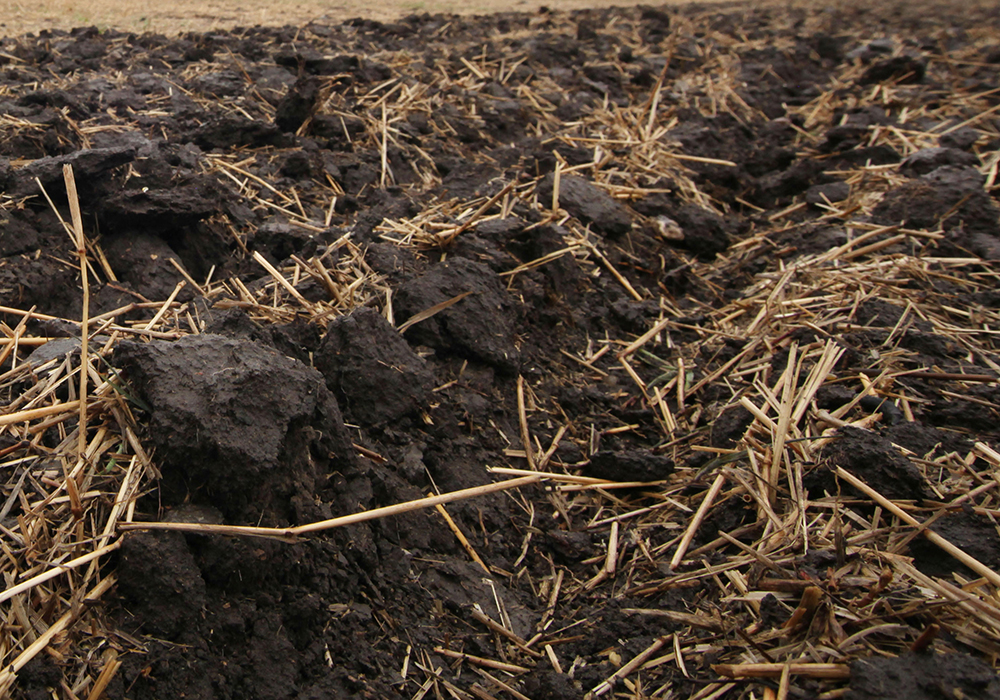Earth’s soils hold three times more carbon than the atmosphere and the most important contributor to fixing how much carbon is stored in the ground are microbes.
Soil micro-organisms are identified in seven different categories, including bacteria, fungi, viruses, blue-green algae, actinomycetes, protozoa and nematodes.
Recent research at Cornell University in New York analyzed large amounts of data related to the carbon cycle and microbial carbon-use efficiency. The first-of-its-kind study used machine learning to analyze larger data sets and showed how much microbes use carbon for growth compared to how much they use it for their metabolism.
Read Also

Using artificial intelligence in agriculture starts with the right data
Good data is critical as the agriculture sector increasingly adopts new AI technology to drive efficiency, sustainability and trust across all levels of the value chain.
During growth, microbes absorb and sequester carbon in their cells and eventually in the soil, whereas during their process of metabolism, carbon gets released as a side product.
Researchers found that the role microbes play in storing carbon is at least four times more valuable than any other process.
“Our initial motivation was to improve prediction of soil organic carbon (SOC) storage at the global scale by Earth system models,” said Yiqu Luo, a professor in the School of Integrative Plant Science at Cornell’s College of Agriculture and Life Sciences.
He said this study combined machine learning with data assimilation, which hadn’t previously been done. It allowed them to predict SOC well.
“We found that microbial carbon-use efficiency is the most important parameter to determine global SOC storage.”
Big data, as Luo explained, contains information about the system they are trying to understand.
He wrote in the report that, although micro-organisms affect the accumulation and loss of soil organic matter through many pathways, microbial carbon-use efficiency provides a way to capture the balance of these processes.
He said that it was known before the study that carbon is absorbed and retained by microbes during growth, but when used for metabolism, it is released as a greenhouse gas.
But the role the ratio of carbon retained for growth compared to the ratio of carbon released as a greenhouse gas plays in storing SOC, especially at regional and global scales, was not known.
“The balance can vary with different types of micro-organisms, environmental conditions and managements,” said Luo. “Traditionally, soil carbon storage is usually thought to be primarily determined by two processes: carbon input from plants and decomposition of organic matter by microbes. This is a so-called traditional paradigm for studying SOC dynamics. This traditional paradigm has prevailed for centuries in agricultural and environmental research.“Our study, for the first time, evaluated all the relevant processes (seven of them, including carbon input, decomposition and microbial carbon-use efficiency) for their relative importance in determining carbon storage using the matrix approach. Then we found the microbial carbon-use efficiency is the most important one.”
The new insights provided by the study open up opportunities to look at farm management practices that most beneficially influence microbial carbon-use efficiency to enhance soil health, potentially improve crop yield and generate food security.
“In the future research, we need to investigate how different management practices, crop breeding, synthetic biology can alter microbial carbon-use efficiency in a direction to enhance soil health, improve food security and increase soil carbon sequestration in response to climate change.”
The digital model the team developed confirmed that overall carbon-use efficiency of microbe colonies was four times as important as other components, such as decomposition from leaf litter and how much is lost to the atmosphere as CO2 when organic matter decomposes.
The research was published in the journal Nature.















